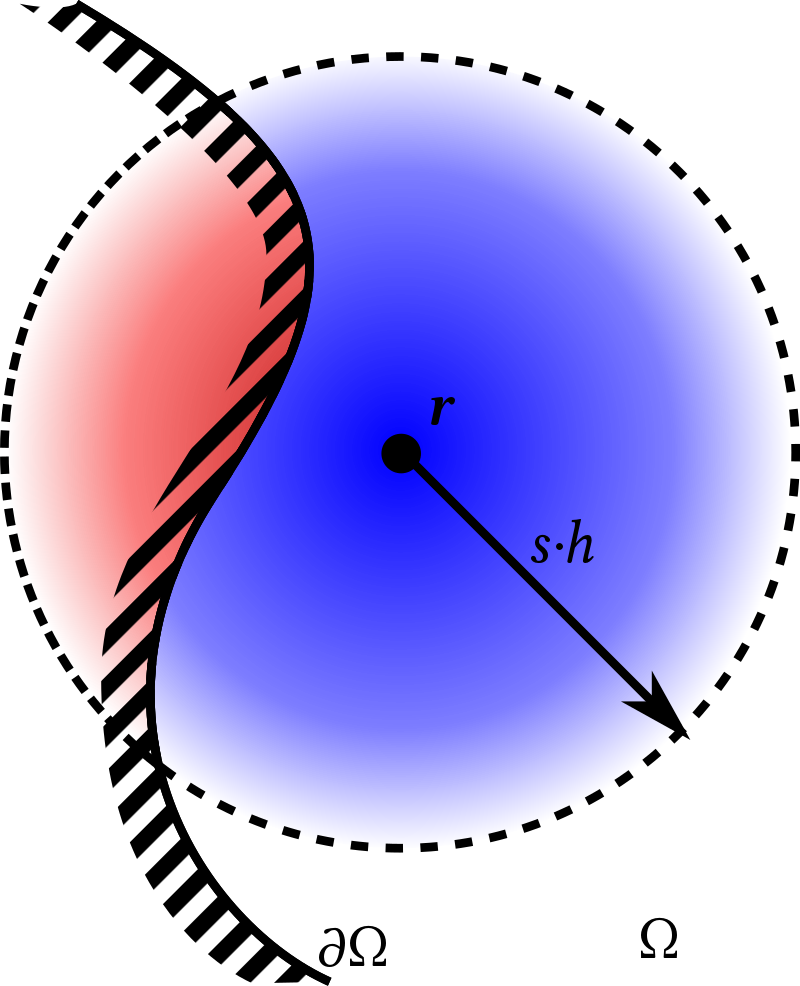Theory - Tensile Correction
Hello!
Looking into the theory I see that for particles with a non filled support domain i.e. something like this picture:
Then when reading DualSPHysics wiki, I see that for the Cubic Spline kernel some kind of tensile correction method is applied, but for the Wendland kernel nothing is mentioned - could anyone explain why?
And also I am not completely sure how DualSPHysics corrects for the tensile correction, in the past I would have assumed a Shephard summation, but that is outphased now.
Kind regards


Comments
From the same wikipedia page I also see this picture:
I guess that DualSPHyics with the new mDBC, uses the last picture, i.e. normals, but using DBC is with the integral neglect method? But then what do we do at a free surface and not at a boundary?
As you can read, I am a bit confused, and just started thinking much about it :-)
Kind regards
Dear user
Let me try to help you with some useful literature.
1) mDBC is in fact using several techniques that include mirroring particles and normals, so that the procedure is using several features of the ones you mentioned before
You can read more about mDBC implementation in: English A, Domínguez JM, Vacondio R, Crespo AJC, Stansby PK, Lind SJ, Gómez-Gesteira M. 2019. Correction for Dynamic Boundary Conditions. In: Proceedings of the 14th International SPHERIC Workshop, Exeter, United Kingdom.
Only some brief description is given in: https://github.com/DualSPHysics/DualSPHysics/wiki/3.-SPH-formulation#385-modified-dynamic-boundary-condition
We are now working on a journal paper
2) The implementation of cubic spline kernel uses the tensile correction shown in Monaghan 1992:
Monaghan JJ. 1992. Smoothed particle hydrodynamics. Annual Review of Astronomy and Astrophysics, 30, 543- 574
Monaghan JJ. 2000. SPH without a Tensile Instability. Journal of Computational Physics, 159 (2), Pages 290-311
3) Wendland kernel is not fully free of tensile correction, however the need of using tensile instability can be avoided:
More information can be also found here: https://twitter.com/spheric_/status/1125816125290373127?s=20
Regards
Thanks @Alex!
A bit more complex than I thought initially, but thanks for the reading sources.
Kind regards